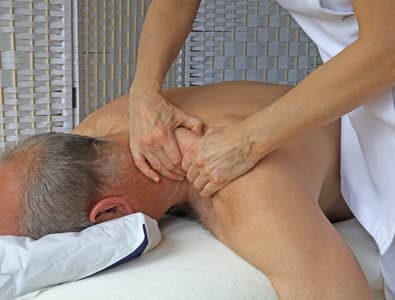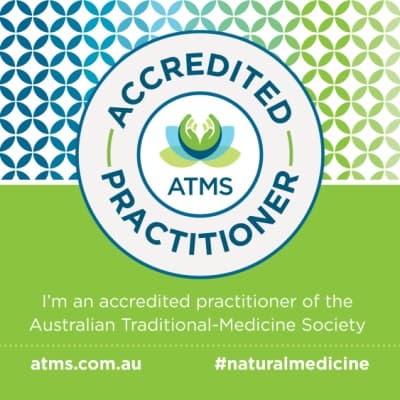
What is Cupping Therapy?
Cupping therapy entails placing cups made of glass, plastic or silicone on the client’s skin. The therapist then uses different techniques to create a vacuum that holds them in place and can also move them all over the body.
Cupping throughout the Times
During the last few years cupping treatments have become very popular among clients and therapists alike. It is also heavily promoted by Olympic athletes and other celebrities as it is an effective therapy for muscular problems and restrictions of the connective tissues (fascia), e.g. scars.
But cupping is not a modern, short lived fad. Indeed, it is one of the most ancient health treatments. Starting in Egypt and China it was developed 3000 years ago. Even the ancient Greek doctor Hippocrates used cupping in his practice.
During the next three millennia it was used by many civilizations as one of the main medical tools to cure all kinds of diseases. In Western countries it is mainly used nowadays to treat musculoskeletal problems, which in return relaxes the whole body and mind.
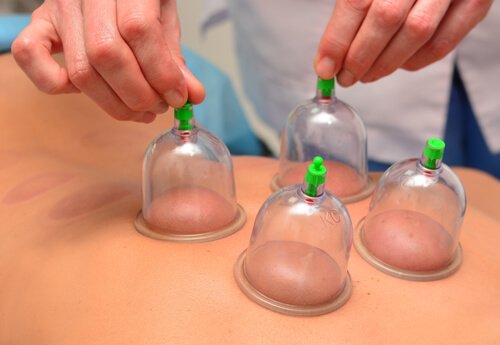
Chinese versus Western Cupping
Chinese Cupping treats blockages in meridians (perceived energy pathways) that can, according to this theory, be blocked by an accumulation of toxins. The removal of these blockages can then lead to the healing of a lot of diseases.
Western cupping however aims to loosen muscles and connective tissues (some interesting images of fascia here), remove or relieve adhesion (kind of internal scar tissues) and therefore improve range of motion .
In addition, this technique does the same as massage: It improves blood flow so that the cells get a fresh supply of oxygen and nutrients, which enables further healing and therefore reduction of pain.
Is Cupping good for you?
Cupping is in general a very safe practice and may benefit most people.
To be able to receive this treatment you should not be on any anti-thrombotic medication, be diabetic or pregnant, have acute rheumatoid arthritis, deep vein thrombosis, aneurysm, an acute circulatory condition, a malignant tumour, or an acute venous disease.
Cups should not be placed on areas where the skin is injured, a fracture is healing, an area with superficial blood vessels, or acute injury. Neither do we treat the neck, inner thighs or the anterior forearm.
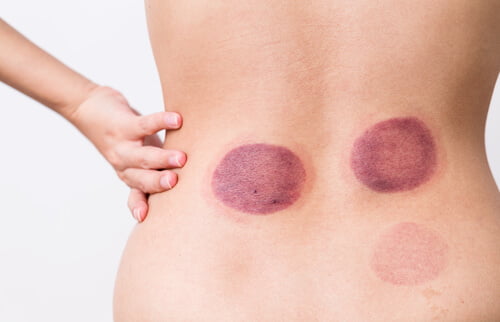
The resulting increased blood supply leaves marks on the treated area. These are sometimes mistaken for bruises. The colour can range from faint rosy to deep red which can be intimidating.
But contrary to bruises these marks usually do not hurt for more than two days or turn yellow, green, or brown; though in some people they can last up to two weeks! The darker the marks that are left, the better the outcome.
Cupping Massage Therapy at ToThePoint Massage
At ToThePoint Massage, we do not use flame cupping (heating up cups with a flame) as this can sometimes burn the client. We use plastic or silicone cups, and apply suction to your skin for a short time and/or use a modern technique that is called Myofascial Cupping.
Myofascial Cupping is a dynamic form during which we use the cups in different manners to glide them over your skin with the help of a gliding balm. It is a “cupping massage”.
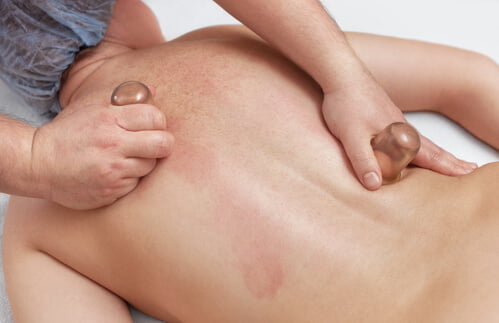
This technique is unique as it does not compress the tissues but lifts and separates them: a passive mini stretch.
Frequently we will use cupping to warm and soften hard fascia in the beginning of a session to improve the outcome of a remedial treatment. Some clients prefer to have a cupping-only session.
In most cases a cupping treatment can provide immediate relief if your pain is coming from your muscles. However, in chronic conditions progress is usually much slower and many clients need 10 – 15 treatments. There should be 4 -5 days rest between each session.
Thank you for your interest, and we look forward to seeing you soon. If you have never tried cupping before you might want to start with a 30 minute session or combine it with remedial massage.

